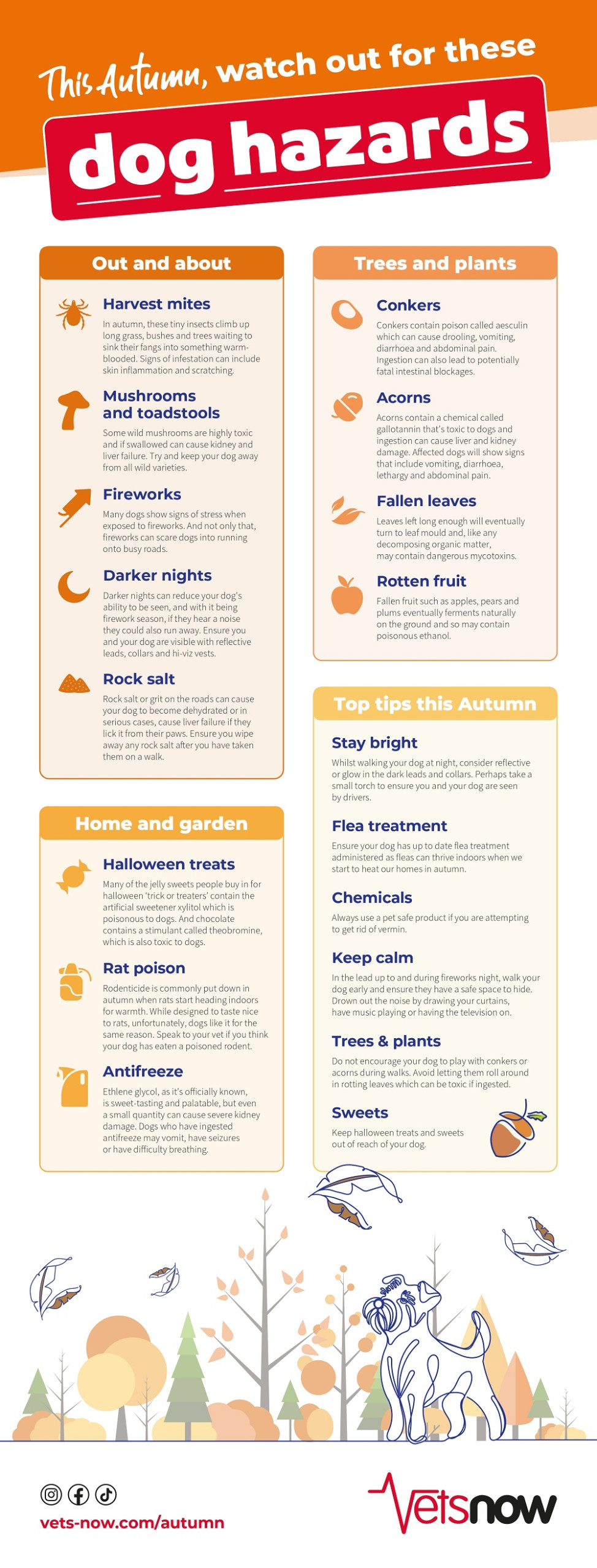This Autumn, watch out for these dog hazards - infographic
Keep your dog safe this autumn by avoiding these hazards
Keep your dog safe this autumn by avoiding these hazards
 Embed this infographic on your site. Click the embed button and copy and paste the code onto your site to show the infographic.
Embed this infographic on your site. Click the embed button and copy and paste the code onto your site to show the infographic.